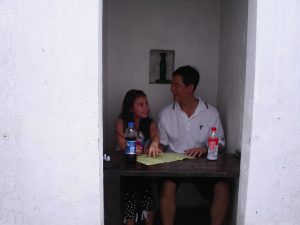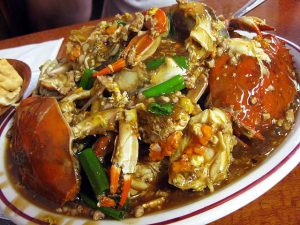3:7 – Hyperlinking The Four Old Indians in GGRW
Write a blog that hyper-links your research on the characters in GGRW according to the pages assigned to you. Be sure to make use of Jane Flick’s reference guide on your reading list.
As a preface to this blog post, I will say that Green Grass Running Water was not an easy read for me. In researching about the connotations of the Four Old Indians, though, I hope to have gained at least a bit of a better understanding of King’s allusions and of his story in general. I strongly welcome feedback or additional insights from anyone reading!
Please note that the page numbers I’m drawing from, in the Kindle version of GGRW, will not coincide with print versions. The section I am covering, though, is the roughly 20 pages (pgs 100-126 in my Kindle) that detail aftermaths of the escape of the four Indians from Dr. Hovaugh’s institution.
The Four Old Indians
The names of the Four Old Indians (Hawkeye, Lone Ranger, Ishmael, and Robinson Crusoe) may initially strike readers (who are familiar with these allusions) as strange— strange because these names typically connotate White men rather than Indian men. From my own understanding, though, King chose these rather ironic names on purpose. In the book, the Four Old Indians are portrayed as clever; they “just disappear,” and their mystical escape from Dr. Joseph Hovaugh’s hospital coupled with their intent to fix the world places them into a heroic light (King, 100). Rather than being the forgotten sidekick, the Four Old Indians are in fact, the heroes. As you will see in my research that follows, the White man is usually depicted as the hero/saviour in literature and pop culture, while the Indian man is relegated to sidekick. In naming the Four Old Indians after these traditionally White heroic figures, King ultimately subverts and reclaims stereotypes and misconceptions about Indians, and in a way, effectively rewrites the original stories too.
Hawkeye
Nathaniel “Natty” Bumppo, aka Hawkeye, is the White frontiersman and protagonist/hero of James Fenimoore Cooper’s collection of novels called The Leatherstocking Tales. Although he has an Indian sidekick known as Chingachgook aka Indian John, depicted as a “noble savage” and the last of his tribe, Hawkeye himself has “knowledge of the ‘Indian ways'” (Flick,142).
Lone Ranger
Perhaps one of the most easily recognized allusions in GGRW and elsewhere, Lone Ranger is the hero of Western books, television series, and of numerous movies (Flick,141). He is portrayed as a masked and heroic man whose true identity is known only by his Indian companion, Tonto. Although Tonto is depicted as a virtuous sidekick to Lone Ranger, critics and scholars suggest that in rendering him unable to master the English language, his portrayal is ultimately one of intellectual inferiority.
Robinson Crusoe
Also a highly popular literary character, Robinson Crusoe is portrayed as the quintessential self-reliant man, stuck on an island for twenty-eight years. His Indian sidekick, Friday, however, is depicted as a cannibalistic and primitive man. Friday is also portrayed as being “saved” by Crusoe, who later teaches him English and converts him to Christianity. This is again a prime example of the noble savage being “redeemed” by Western/Eurocentric qualities, and clearly supports the notion that white = advanced while Indian = primitive.
Ishmael
A literary figure popularized by Moby Dick, Ishmael is the last standing character and the only survivor in the novel (Flick, 143). Though his sidekick, Queenqueg, is of South Pacific Islander descent, he is still representative of the non-White sidekick trope. Portrayed as a primitive cannibal, he is also a great friend of Ishmael’s. However it is Queenqueg who ultimately sinks and dies with the Pequod ship (which is named after the Pequot people, a Native American tribe) thus symbolizing the fall of the non-White character. Ishmael survives by staying afloat on the coffin Queenqueg preemptively asked to be made (he thought he was going to die of a fever), perhaps suggesting that Queenqueg was ultimately just a crutch for Ishmael, a means to his own (apparently more important) survival. This is consistent with all the sidekicks’ I’ve outlined- their survival or importance is always second to the White characters’. The figure of Ishmael could also be a reference to Abraham’s disavowed and first son, as depicted in religious texts, though, I am less certain as to how this may be connected to the larger context of GGRW. Thoughts, anyone?
Works Cited
“Chingachgook: Fictional Character.” Encyclopaedia Britannica. Encyclopaedia Britannica, Inc. 2014. Web. 30 July 2016.
Flick, Jane “Reading Notes for Thomas King’s Green Grass Running Water“. Toronto, Harper Collins, 1994. Web. 30 July 2016.
Kim, Wook. “Friday, Robinson Crusoe.” Time Magazine. Time Inc, 2016. 16 Dec. 2011. Web. 30 July 2016.
King, Thomas. Green Grass Running Water. HarperCollins Publishers E-Books. 2010. Kindle file.
“Noble Savage: Literary Concept.” Encyclopaedia Britannica. Encyclopaedia Britannica, Inc. 2014. Web. 30 July 2016.
Schilling, Vincent. “7 Things You Should Know About the Mashantucket Pequot Tribal Nation.” Indian Country Today. Indian Country Today Media Network, LLC. 3 Sept. 2015. Web. 30 July 2016.
“Tonto: Fictional Character.” Encyclopaedia Britannica. Encyclopaedia Britannica, Inc. 2014. Web. 30 July 2016.

